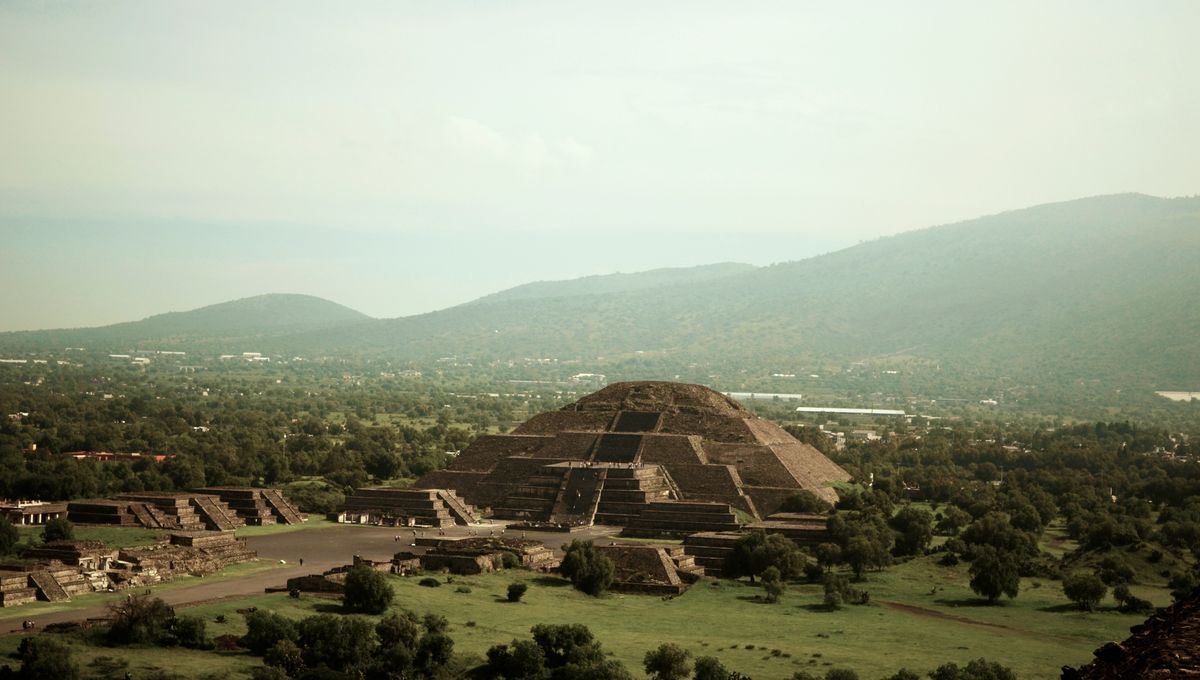
The largest city state ever to exist in Mesoamerica may have drawn its power from a spine-chilling lust for shiny objects and human blood, both of which could be satisfied by the razor-sharp volcanic glass known as obsidian. According to a new analysis of a sacrificial temple within the pre-Columbian city of Teotihuacan, the populace’s fascination with this reflective material resulted in a cult-like obsession with mirrors and blood-spilling, all of which became inextricably linked to the expansion of the empire.
Predating the Aztec civilization by over 1,000 years, the ancient metropolis of Teotihuacan thrived in central Mexico from 100 BCE to 800 CE. As in many other Mesoamerican cultures, the city’s elites suffered from what scholars refer to as a “reflective surface complex”, and regularly used pyrite and obsidian mirrors as oracular tools to divine the future and communicate with the gods.
However, according to a new study by Dr Trenton D Barnes of Williams College, this magpie-esque fancy for shimmery surfaces ran much deeper than mere soothsaying and inspired some truly horrifying practices. Evidence for this bloody mirror cult, he says, can be found at the Pyramid of the Feathered Serpent, the third largest structure in the iconic ancient city.
According to Barnes, the temple was adorned with hundreds of “monumental sculptures [depicting] mirrors from which emerged the deity Feathered Serpent, later called Quetzalcoatl among the Nahuatl-speaking Mexica Aztecs.” Sadly, the site has been repeatedly ransacked since it was constructed in around 200 CE, yet one of the statues still retains the reflective obsidian disks that were originally embedded within its eye sockets.
“Potentially hundreds of mirrors of this sort were originally incorporated into the Pyramid of the Feathered Serpent’s facade,” writes Barnes. “Towards the end of a clear day, as the sun neared the western horizon, the sculptured heads’ black eyes would have burst aflame with reflected light.”
Yet the temple was far more than just a glorified disco ball. Beneath the pyramid, archaeologists have discovered the skeletons of around 200 human sacrifices, making this the largest ritual killing ever to have occurred in Mesoamerica at the time.
Deposited among these sacrificial remains are large numbers of obsidian blades and projectile points, suggesting that the material was used as a means of spilling blood and ritually extinguishing human life. Thus, through obsidian, a clear connection between mirrors and blood is established.
Putting this into historical context, Barnes notes that the construction of the pyramid coincided with a massive increase in obsidian mining and importation at Teotihuacan. Not only did this provide access to more mirrors, it also secured the raw materials with which the bloody weapons of the empire were crafted.
It is therefore significant that many of the sacrificial victims found beneath the pyramid appear to be from foreign lands. Seen in this light, Barnes argues that the Pyramid of the Feathered Serpent was constructed as a means of cementing Teotihuacan’s power by codifying the connection between blood and mirrors, thus standing as a monument to the city’s “martially expansionist and imperialist state ideology”.
“From the time of this structure’s completion, blood and mirrors, obsidian implements preeminent among the latter grouping, became paired in the Teotihuacan [cosmology],” he writes.
In other words, the mirror cult appears to have really taken off in Teotihuacan just as the use of obsidian for warring weapons and sacrificial blades became widespread. Given that both war and human sacrifice were fundamental to the establishment of political control, the religious association between blood and mirrors can be seen as a key component of the state’s imperial ambitions.
“More metaphorically, the mirror alluded to the state’s capacity to spill blood with obsidian,” concludes Barnes.
The study is published in the journal Ancient Mesoamerica.
Source Link: The "Blood Mirror Cult" That Inspired A Powerful Pre-Aztec Empire